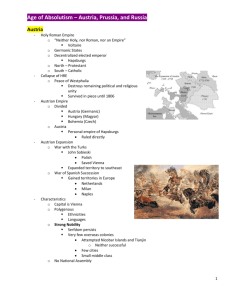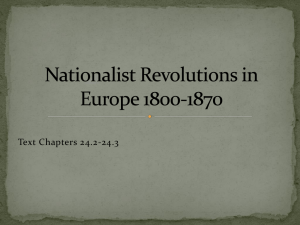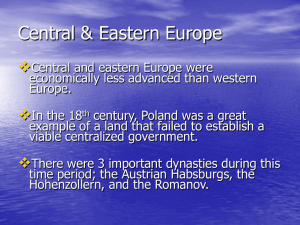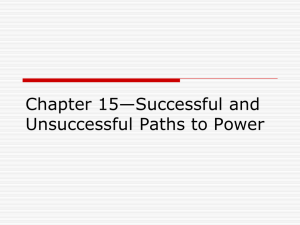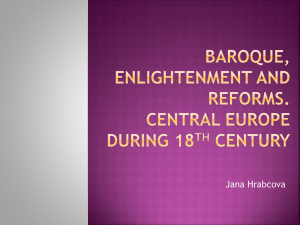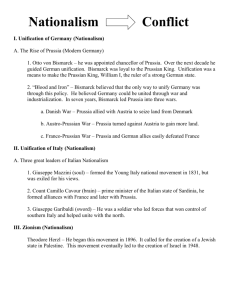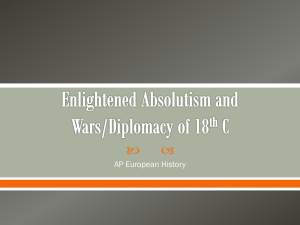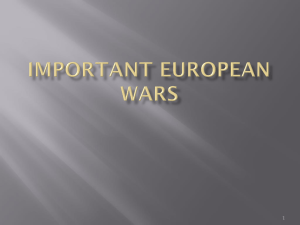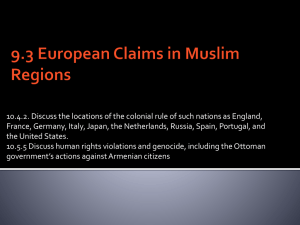AP EURO: LECTURE OUTLINE pp
advertisement
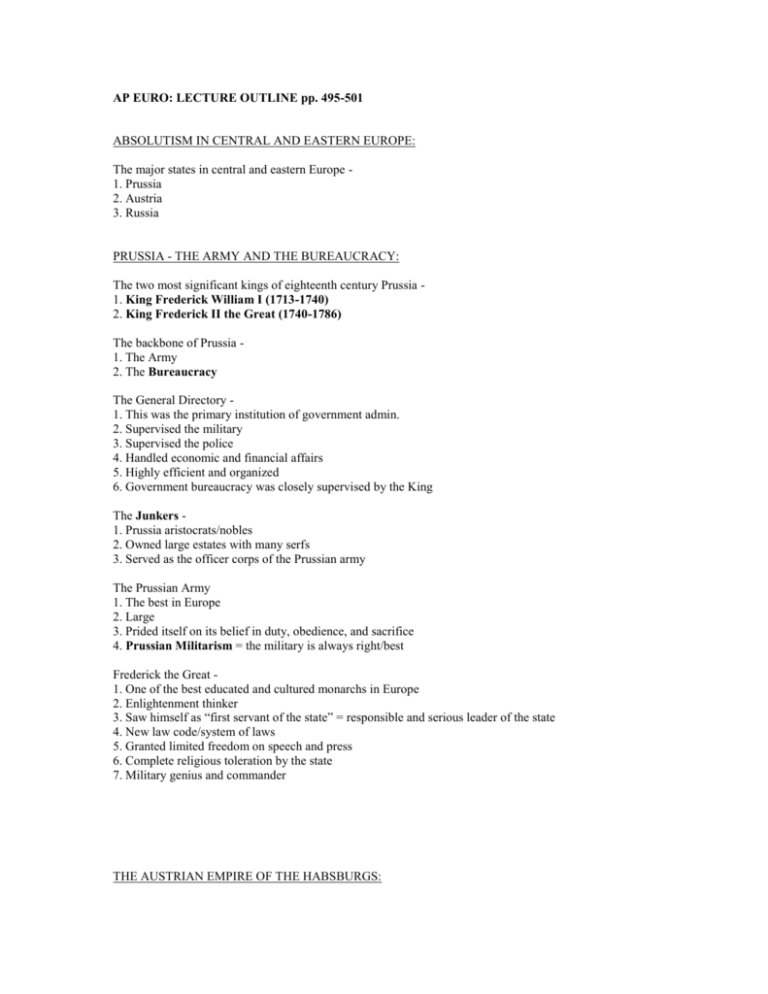
AP EURO: LECTURE OUTLINE pp. 495-501 ABSOLUTISM IN CENTRAL AND EASTERN EUROPE: The major states in central and eastern Europe 1. Prussia 2. Austria 3. Russia PRUSSIA - THE ARMY AND THE BUREAUCRACY: The two most significant kings of eighteenth century Prussia 1. King Frederick William I (1713-1740) 2. King Frederick II the Great (1740-1786) The backbone of Prussia 1. The Army 2. The Bureaucracy The General Directory 1. This was the primary institution of government admin. 2. Supervised the military 3. Supervised the police 4. Handled economic and financial affairs 5. Highly efficient and organized 6. Government bureaucracy was closely supervised by the King The Junkers 1. Prussia aristocrats/nobles 2. Owned large estates with many serfs 3. Served as the officer corps of the Prussian army The Prussian Army 1. The best in Europe 2. Large 3. Prided itself on its belief in duty, obedience, and sacrifice 4. Prussian Militarism = the military is always right/best Frederick the Great 1. One of the best educated and cultured monarchs in Europe 2. Enlightenment thinker 3. Saw himself as “first servant of the state” = responsible and serious leader of the state 4. New law code/system of laws 5. Granted limited freedom on speech and press 6. Complete religious toleration by the state 7. Military genius and commander THE AUSTRIAN EMPIRE OF THE HABSBURGS: The Austrian Empire 1. Led by the Habsburg monarchy 2. Vienna was the capital of the empire 3. The empire was multinational and multicultural 4. Difficult to create a single unified system of laws and administration Empress Maria Theresa (1740-1780) 1. Reforms her empire in order to strengthen it against Prussia 2. Makes the empire more centralized and bureaucratic 3. Enlarges and modernizes the army 4. She was deeply Catholic and conservative - resisted radical reforms that the philosophes wanted Emperor Joseph II (1780-1790) 1. He was a great believer in the enlightenment 2. Reason should dominate government and society 3. Radical reforms 4. Abolished serfdom 5. Economic modernization - eliminated internal trade barriers, monopolies, and guild restrictions 6. New law code/equality equality of all before the law 7. Religious reforms - toleration 8. Reforms were too radical - upset everyone 9. When he died most of his reforms were cancelled - failure RUSSIA UNDER CATHERINE THE GREAT: Catherine the Great (1762-1796) 1. The German wife of the Tsar - has her husband murdered 2. Becomes Tsarina - claimed to be enlightenment reformer 3. Tried to reform the law code - issues Instruction - nothing changes 4. Landowning aristocrats gain more power and influence - Charter of the Nobility 5. Conditions worsen for the peasantry/serfs Cossacks - tribal warriors who fought in southern Russia Emelyan Pugachev1. Leader of a mass peasant rebellion in southern Russia 1773-1175 2. Peasants rise up and burn estates and 1500 aristocrats and their families are murdered 3. Pugachev is captured and executed - the revolt collapses 4. Pugachev’s rebellion scares the hell out of the nobles - crackdown and no reform Territorial expansion under Catherine 1. Westward into Poland 2. Southward to the Black Sea Treaty of Kuchuk-Kainarji - gain territory and some rights from the Ottoman Turks THE DESTRUCTION OF POLAND: Problems for Poland 1. Weak elected monarch 2. Limited powers of the king 3. Small bureaucracy 4. Small army 5. King had no power/nobles had all the power 6. Surrounded by three powerful neighbors The partitions of Poland = three strong neighbors Prussia , Austria, and Russia seize polish territory and divide it among themselves 1. First partition 1772 - 30% of territory taken 2. Second partition 1793 - more land taken 3. Third partition 1795 - Poland ceases to exist/disappears from the map The lesson of Poland = strong, absolutist states was necessary if you wanted to survive!
